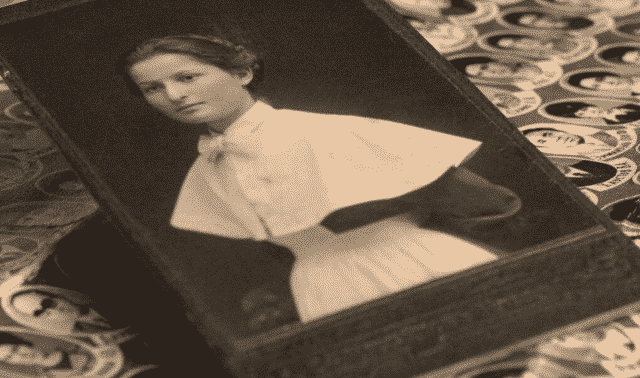Sign up for the Family Tree Newsletter! Plus, you’ll receive our 10 Essential Genealogy Research Forms PDF as a special thank you.
Get Your Free Genealogy Forms
"*" indicates required fields
November is a great time to focus on family storytelling! Each of these these five activities can help you tell your family’s story in a creative, compelling way.
1. Create a Family History Photo Book
Thanks to several services you can find online, you can create professional-looking family history photo books in a weekend on a family history topic you’d love to spotlight, such as an ancestor’s life story, your paternal line or your grandmother’s love of cooking. It should be a subject you think your anticipated audience would love, for which you have 10-40 digitized photos, documents, maps or other illustrations.
Family Tree Magazine Editor Diane Haddad created a photo book about her grandfather’s life as a holiday gift for her father. Choose a photo book web service such as Shutterfly, MyCanvas (click Family History, under Products, to import from your Ancestry.com account) or Snapfish, and start creating.
2. Write an Ancestor’s Biography
You probably know more about certain people on your tree than anyone else in the world. Why not honor one by writing up a brief biographical sketch? Start by creating a timeline of that person’s life, based on your research discoveries and family memories. Write up several paragraphs that put the chronology into a narrative format. Add quotes from newspaper articles, oral history interviews, wills or other sources you’ve discovered. Throw in a few pictures—of the person, of a place or a document associated with her or him.
Once you’ve written this up, find the perfect place to publish it. Upload a version to that person’s profile on your online public tree or attach the biography to your ancestor’s profile in a community or global tree website such as FamilySearch or Geni, so all linked descendants might easily find it. See whether a genealogical or historical society local to your ancestor’s home would like to publish it in its newsletter. Another option is donating a digital copy to FamilySearch’s digitized collection.
3. Start a Family History Blog
Blogging about your family history is yet another way to disseminate your genealogy research, as well as digitized copies of heirloom photos and historical documents. It’s generally free. A blog lets you write and publish short entries over time, making them available for others to enjoy. Blogs are easy to update or correct when you learn new information that changes your interpretation of the past. And blogs put your research at the fingertips of anyone interested enough to Google the subjects you’re writing about.
Get started by creating an account at a blogging platform such as WordPress or Blogger. Commit to adding periodic entries: say, once a week. Plan to write 300-500 words in each post, with 1-3 images whenever possible.
4. Create a Family History Display
There are many ways to share your family history—not just in writing. Create a conversation-starting wall chart or display: these also make fantastic gifts. Frame ancestral photos or artifacts or create an album. Check out tons of ideas on our Family History Crafts board on Pinterest.
Order a professionally designed and printed wall chart displaying your family tree or a personalized map of your DNA ethnicity; gorgeous designs are available at Family ChartMasters.
5. Write Your Own Life Stories
Your memories, experiences and life lessons matter, whether or not you have descendants (and whether or not they’re currently interested in your life). Record your life stories as a gift to yourself and future generations. You don’t have to wait until you’ve reached a venerable old age to do so. (If you’ve reached that age already, it’s definitely time to start!)
Begin simply by choosing a memory you want to relive and writing about it. Give yourself time to recollect additional details. Research any details you’ve forgotten by perusing your old photos, letters and any journals you’ve kept. If you’re ready to document your life in a more systematic or reflective way, use a life-story-writing journal; Story of My Life: A Workbook for Preserving Your Legacy is now in its 2nd edition.
Last Updated: November 2024
FamilyTreeMagazine.com is a participant in the Amazon Associates Program, an affiliate advertising program. It provides a means for this site to earn advertising fees, by advertising and linking to Amazon and affiliated websites.









